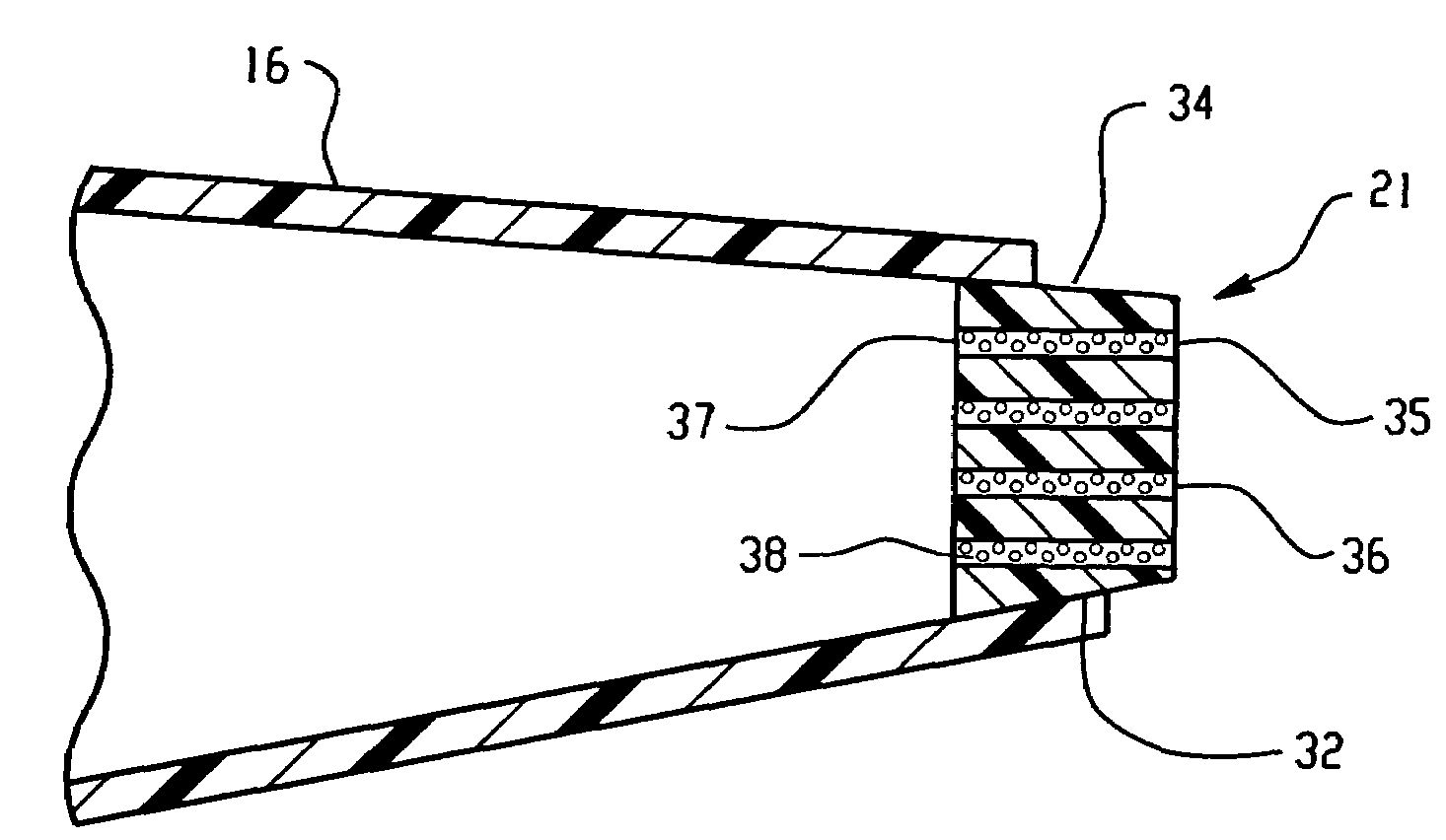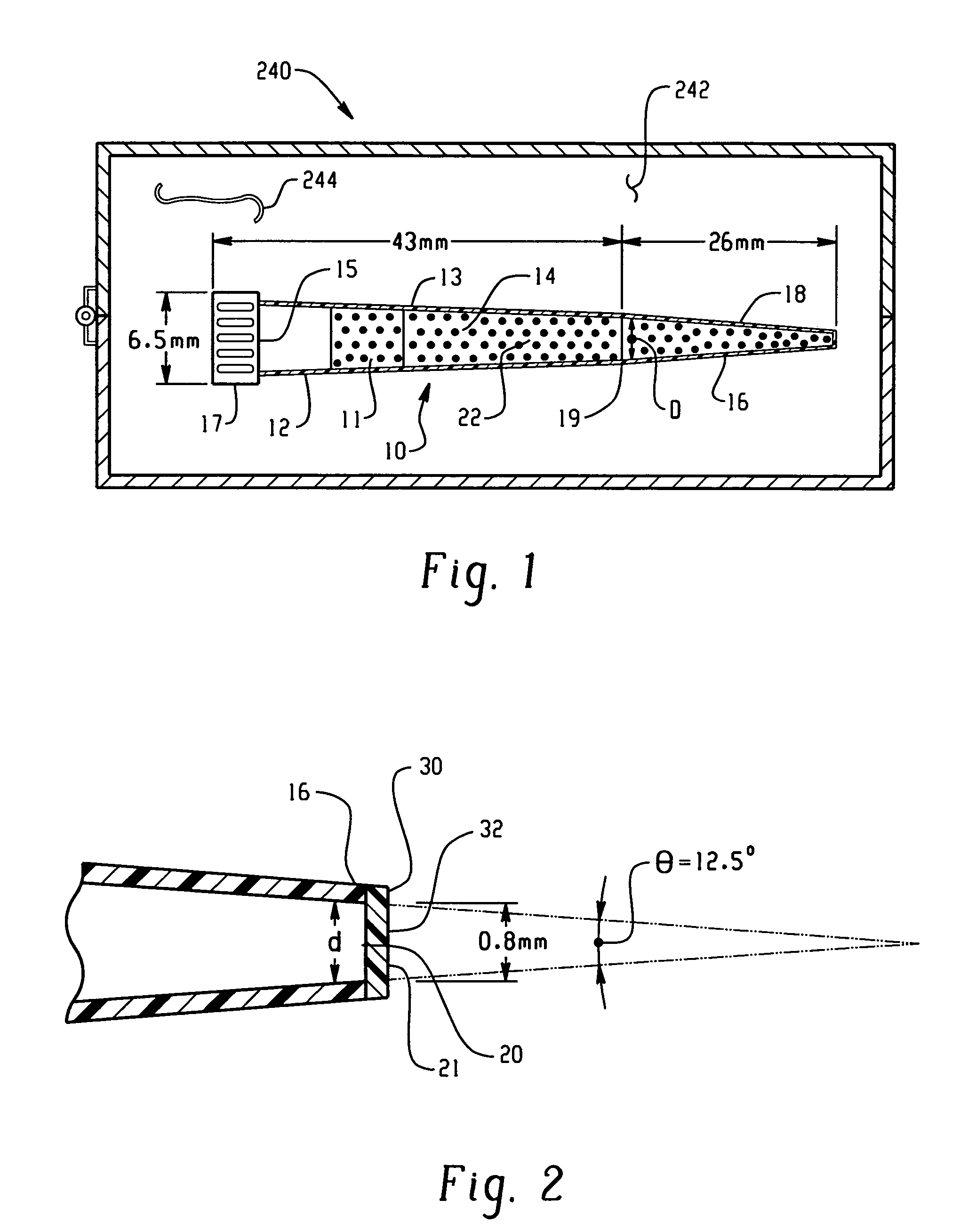Device for precise chemical delivery and solution preparation
a technology of precise chemical delivery and solution preparation, applied in the field of devices and methods for forming solutions, can solve the problems of difficult adjustment of sub-l air volumes accurately and precisely, and difficulty in dislodging nl-size droplets from pipette tips, etc., and achieves little human control
- Summary
- Abstract
- Description
- Claims
- Application Information
AI Technical Summary
Benefits of technology
Problems solved by technology
Method used
Image
Examples
example 1
Preparation of a Ferricyanide Delivery Burette
[0205]Ten mL of an aqueous solution containing 3.29 g of K3[Fe(CN)6](P-3667 Sigma) and 74.6 mg of KCl (P217-500, Fisher Scientific) was prepared. To this solution, 0.5 g of a gelling agent, agarose (A-6013, Type 1: Low EEO [9012-36-6], Sigma) was added. This mixture was heated up to 80° C. until the solution becomes clear. One mL of this solution was filled into a micropipette tip (101-1000 μL, 2 13 / 16 inches, Eppendorf style, 21-375E, Fisher Scientific) and allowed to stand at room temperature until the filling solution became gel. The detailed dimensions of the thus prepared ferricyanide delivery burette are shown in FIG. 24.
example 2
Preparation of a Potassium Delivery Burette
[0206]Ten mL of an aqueous solution containing 74.6 mg of KCl (P217-500, Fisher Scientific) 5.84 mg of NaCl (S-9625, Sigma) and was prepared. To this solution, 0.5 g of agarose (A-6013, Type 1: Low EEO [9012-36-6], Sigma) was added. This mixture was heated up to 80° C. until the solution becomes clear. 200 μl of this solution was filled into a micropipette tip (1-200 μL, 1⅞ inches, Eppendorf style, 21-375D, Fisher Scientific) and allowed to stand at room temperature until the filling solution became gel.
example 3
Ferricyanide Delivery
[0207]A ferricyanide burette was prepared as for Example 1. FIG. 20 shows the experimental setup for ferricyanide (and potassium) ion delivery. 200 μL of 0.1M KCl aqueous solution was used as a sample (target) solution 50. The solution 50 was placed in a container having a silicone elastomer liquid support surface. To monitor the delivered ferricyanide concentration into this sample solution, a micro Pt electrode 250 8 μm in diameter was used in combination with a counter electrode 252 formed from stainless steel wire and a reference electrode 254 (BAS Ag / AgCl microreference electrode). The cyclic voltammograms for various delivery times from 0 to 41.3 minutes are shown in FIG. 21. The current due to reduction or rather, electro-reduction of ferricyanide increases with increasing delivery time, indicating successful reagent delivery with the prepared diffusional burette 10. FIG. 22 shows three sets of the ferricyanide delivery results obtained by using the same ...
PUM
 Login to View More
Login to View More Abstract
Description
Claims
Application Information
 Login to View More
Login to View More - R&D
- Intellectual Property
- Life Sciences
- Materials
- Tech Scout
- Unparalleled Data Quality
- Higher Quality Content
- 60% Fewer Hallucinations
Browse by: Latest US Patents, China's latest patents, Technical Efficacy Thesaurus, Application Domain, Technology Topic, Popular Technical Reports.
© 2025 PatSnap. All rights reserved.Legal|Privacy policy|Modern Slavery Act Transparency Statement|Sitemap|About US| Contact US: help@patsnap.com



